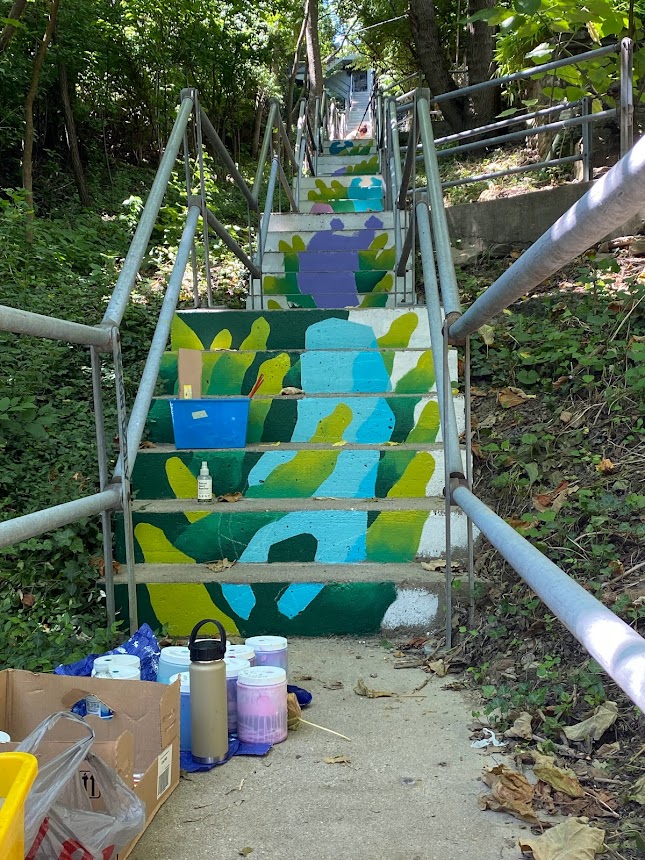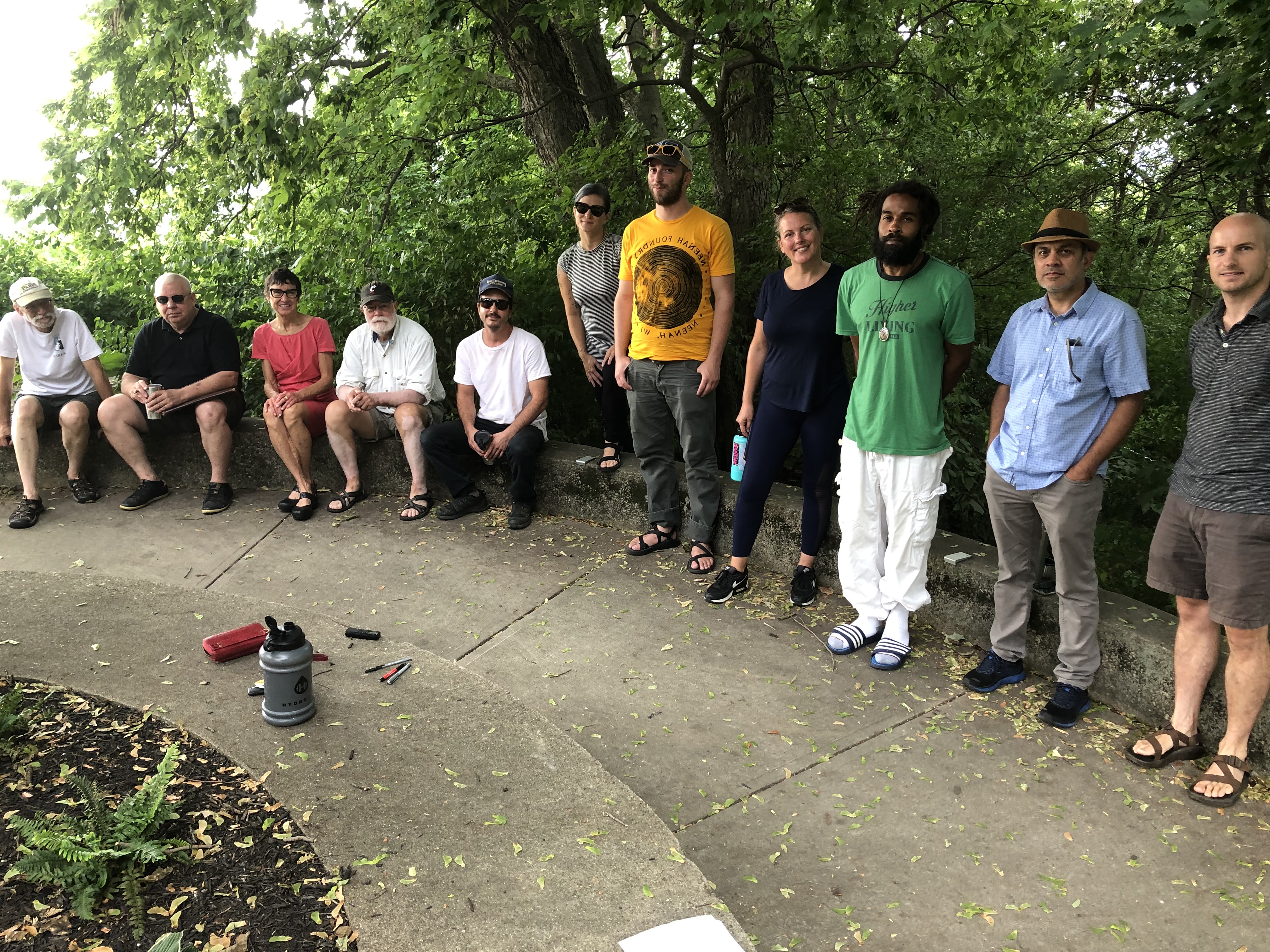Public Space:
How can a public staircase transformed by art become a public space of neighborhood connection and identity?
Background
A public space is open to serve the needs of everyone in a community rather than just a few. Many people may not know that nearly the 400 stairways in Cincinnati are public spaces.
We believe public spaces should be clean, attractive, and inviting. By installing art on public stairways, we work against the stereotype that they are inaccessible and dangerous.




Neighborhood Connection
Our pilot project, the Ohio Avenue Steps, are near the intersection of three neighborhoods: Mount Auburn, Over the Rhine and Clifton Heights-University Heights-Fairview (CUF). Through community input sessions, we listened to what neighborhood residents had to say about this public space and how they thought art might improve it.
Identity
In the community input sessions, residents voted on which artists and artworks they believed would best represent their neighborhood. For the upper Ohio Avenue stairs, residents expressed their desire for a design that would complement the green space around the stairs and connect them to nature. Allowing for community input in the final design provided residents with a greater sense of connection to the artwork.


 Image by We are Walnut Hills via https://wearewalnuthills.org/event/cinco-de-mayo-five-points-alley/
Image by We are Walnut Hills via https://wearewalnuthills.org/event/cinco-de-mayo-five-points-alley/

Research and Precedents
Five Points Alley, Cincinnati ︎︎︎
A local example of transforming public space in Cincinnati is the Five Points Alley. In the Spring of 2013, over 50 neighborhood volunteers came together to clean up the neglected Five Points Alley. Residents held clean-ups of the space every month and the local redevelopment foundation hosted “pop-up biergartens,” family friendly gatherings that added a sense of community. The space has gone from a forgotten and overgrown alley to become a community courtyard amid many businesses.Yale Study of the Porch Light Murals, Philadelphia ︎︎︎
The Porch Light Program is a collaboration between Mural Arts Philadelphia’s Department of Behavioral Health and Intellectual disAbility Services to create murals that improve the built environment, social connections, and neighborhood empathy.A 2013 Yale School of Medicine study measured community-level results of residents living within a mile of a newly installed mural, over the course of about one year, and reported a relative increase in collective efficacy and trust among neighbors, an increase of informal social control, an increase in perceived neighborhood aesthetic quality, an increase in perceived safety, and a decrease in stigma towards individuals with mental health or substance abuse challenges.
Step Up to Art team member Vikhas Mehta is a professor of planning at DAAP. You can learn more about public space through his book, Companion to Public Space, co-edited with Danilo Palazzo
